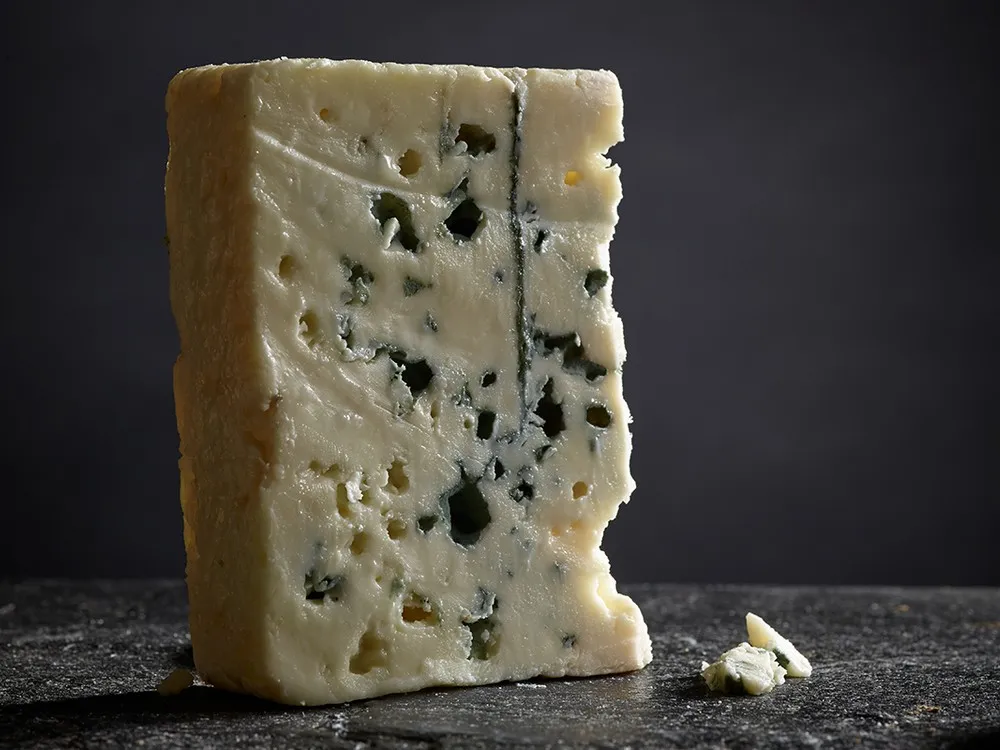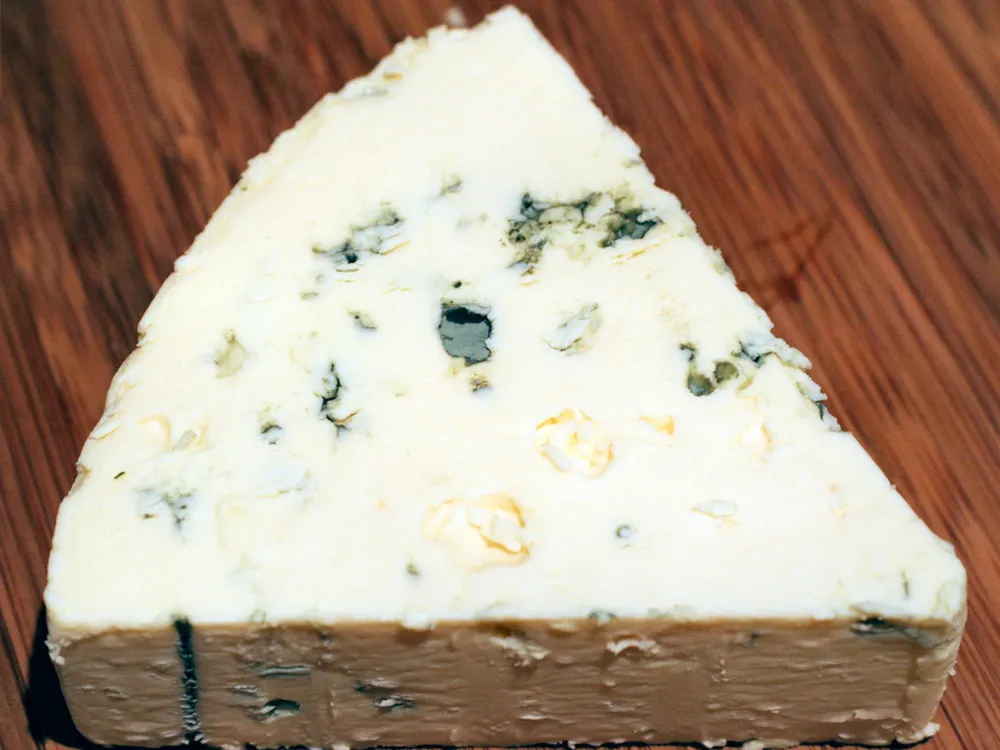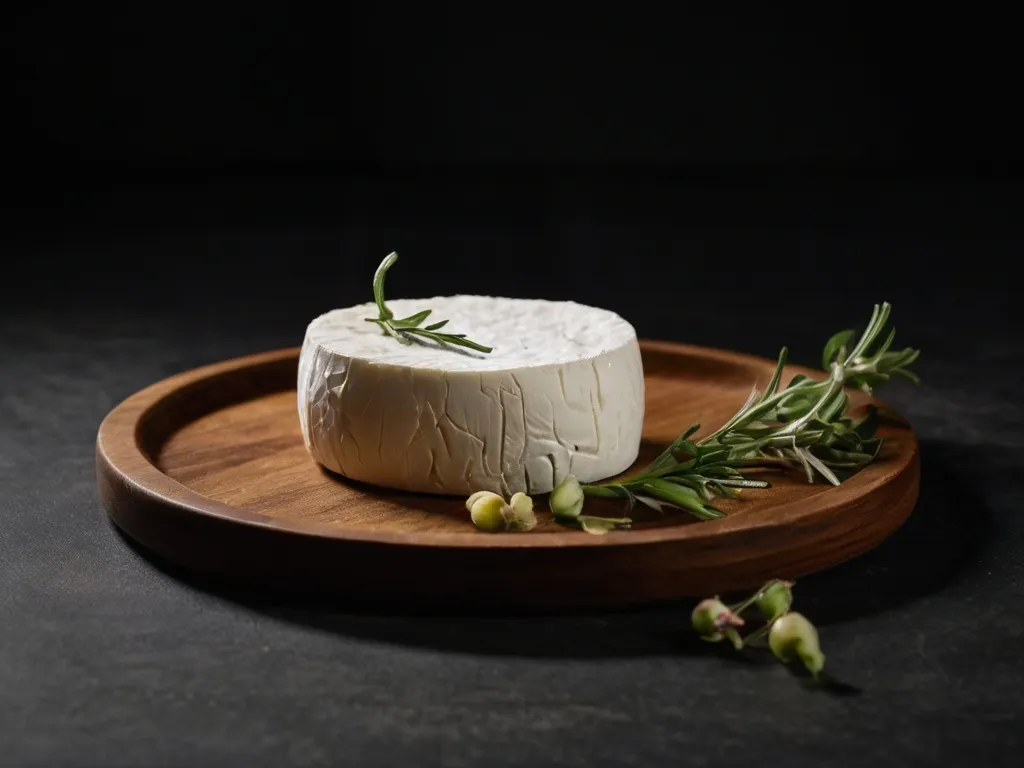Roquefort
What is Roquefort Cheese? What does Roquefort Taste Like?
Roquefort is a blue cheese with a unique flavor profile that originates from the picturesque Roquefort-sur-Soulzon region in France. Its distinctively rich, tangy taste and creamy texture have made it an enthusiast's favorite among cheese lovers around the world. This cheese, aged for three to five months in local limestone caves, holds a protected designation of origin (PDO) status. While it's often dubbed the 'King of Cheeses' in France, other cheeses also vie for this title. So, what sets Roquefort apart, and what does it taste like?
What does Roquefort Taste Like?
Roquefort cheese is tangy, creamy and slightly moist with crumbly texture. It boasts a distinct flavor due to the use of Penicillium roqueforti mold. The exterior of the cheese is edible and slightly salty, and it pairs well with crusty bread, fruits, and sweet wines.
The taste of Roquefort cheese is genuinely distinctive. It offers a complex profile of flavors, both saline and tangy, creamy and earthy at the same time. The cheese is made from the raw milk of a specific breed of sheep called Lacaune, which graze in the limestone-rich pastures of the region. This unique terroir gives Roquefort its characteristic taste.
Upon taking your first bite, you'll experience a sharp and salty kick that melts into a luscious creaminess as the cheese coats your palate. The blue veins running through the cheese add a subtle zest and a slightly spicy edge. The flavors are, however, generally well-balanced and manageable, making Roquefort an exceptional cheese for pairing or enjoying on its own.
In addition to its delightful taste, Roquefort has a smooth and crumbly texture. It easily crumbles apart, allowing you to savor every bite. The cheese's velvety mouthfeel enhances the overall tasting experience and adds to its allure.
The production of Roquefort cheese is a meticulous and time-honored process. The cheese is aged in natural limestone caves, a unique environment that fosters the growth of Penicillium roqueforti, the mold responsible for the cheese's distinctive blue veins. The cheese is carefully monitored and turned by hand to ensure a consistent distribution of flavors throughout the aging process, resulting in the unique taste and texture of Roquefort.
What Type of Cheese is Roquefort?
Roquefort belongs to the blue cheese family, which is characterized by the presence of blue-green veins running through the cheese. It stands out among its counterparts due to its protected designation of origin (PDO) status. This means that Roquefort cheese can only be produced in a specific region of France and must adhere to strict production criteria.
The cheese is made using traditional methods that have long stood the test of time. After milking the Lacaune sheep, the raw milk is fermented with a specific mold called Penicillium roqueforti. This mold imparts the distinctive blue veins found in the cheese while also lending flavor. The aged cheese is then pierced with needles, allowing oxygen to reach the interior to encourage the growth of the mold.
The cheese itself has a rich and storied history that spans over a millennium. Legend has it that a shepherd, captivated by a distant maiden, left his lunch of bread and cheese in a cave. When he returned months later, the bread had transformed into moldy cheese, thanks to the unique mold present in the cave - the first Roquefort. This accidental discovery led to the creation of one of the world's most renowned blue cheeses, one that is steeped in cultural significance and culinary tradition.
Today, Roquefort is still aged in the same natural Combalou caves of Roquefort-sur-Soulzon in southern France. The caves provide the perfect environment for the cheese to mature, with their cool, damp conditions fostering the growth of the desirable blue mold. This natural aging process is crucial in developing the complex flavors and creamy texture that Roquefort is known for.
How Long Does Roquefort Cheese Last?
When properly stored, Roquefort cheese has an impressive shelf life. Due to its unique production process, the cheese develops intense flavor as it ages, becoming only more delicious with time. If you purchase a whole wheel or wedge of Roquefort, it's best to enjoy it within two to three weeks to appreciate its taste and texture fully.
To preserve the cheese, wrap it tightly in foil or wax paper and place it in the refrigerator. Avoid using plastic wrap, as it can suffocate the cheese and alter its flavor. Remember to remove the cheese from the fridge a short while before serving to allow it to reach room temperature and fully showcase its flavors.
What is Roquefort Cheese Used For?
Roquefort is incredibly versatile and can be used in various culinary creations. It adds a burst of flavor to salads, pasta dishes, and risotto. The creamy texture of Roquefort makes it an excellent choice for spreading on crackers or bread, providing a delectable tanginess to your appetizers.
Roquefort can also be crumbled over grilled meats, enhancing their taste with its savory notes. It pairs wonderfully with fruits like pears and grapes, creating a delightful balance of sweet and salty flavors. Additionally, this cheese can be used as a key ingredient in savory sauces, lending depth and richness to your culinary masterpieces.
Where Is Roquefort Cheese From?
Roquefort cheese has a long and fascinating history that begins in the rugged mountains of southern France. It is produced exclusively in the commune of Roquefort-sur-Soulzon, located in the Aveyron department. The unique microclimate of the region, coupled with the limestone caves that permeate the area, creates the perfect environment for the cheese to mature.
The caves, known as the "fleurines," provide natural air circulation and maintain a cool temperature, aiding in the development of the cheese's distinctive flavors. The use of these limestone caves for aging dates back centuries and is a vital part of Roquefort's traditional production process.
Where Does Roquefort Cheese Come From?
The production of Roquefort cheese can be traced back over a thousand years to the Middle Ages. Legend has it that a young shepherd, seeking refuge from a storm, left his meal of bread and cheese in a cave. When he returned weeks later, he discovered that the bread had turned moldy, but the cheese inside was deliciously transformed.
Since that serendipitous discovery, Roquefort cheese has captivated the taste buds of cheese enthusiasts worldwide. The cheese-making techniques have been passed down through generations, ensuring the preservation of its unique qualities.
Today, Roquefort cheese is cherished not only for its exceptional taste but also for the cultural heritage and traditions it embodies. It serves as a testament to the craftsmanship and dedication of the producers, who continue to uphold the centuries-old methods to create a cheese that delights and tantalizes the senses.
Roquefort cheese is a true gem among blue cheeses. Its distinctive taste, creamy texture, and rich history make it a culinary treasure worth exploring. Whether enjoyed on its own, paired with fruits, or incorporated into a myriad of dishes, Roquefort cheese is sure to leave a lasting impression on your palate and ignite your passion for fine cheeses.eese is sure to leave a lasting impression on your palate and ignite your passion for fine cheeses.

Over 200,000 page views per month, Put your store on our map!
Contact UsOther French cheeses:
Roquefort cheese, a unique delicacy with its distinct blue veins and rich flavor, is a beloved choice among cheese enthusiasts. However, there may be times when you find yourself in need of a substitute for Roquefort cheese, whether it's due to dietary restrictions, availability issues, or simply wanting to try …
Read MoreRoquefort Q & A
-
Is Roquefort Cheese Lactose-Free?
No, Roquefort cheese is not lactose-free. Like most dairy products, Roquefort cheese contains lactose. However, the aging and fermentation …
Read More -
Is Roquefort Cheese Vegetarian?
Roquefort cheese is not considered vegetarian as it is made using animal rennet. Rennet is an enzyme derived from …
Read More -
Is Roquefort Cheese Gluten-Free?
Yes, Roquefort cheese is gluten-free. The cheese itself does not contain any gluten, as it is made from sheep's …
Read More -
Does Roquefort Cheese Melt?
Roquefort cheese is known for its crumbly texture rather than its melting capabilities. When exposed to heat, Roquefort cheese …
Read More -
How To Store Roquefort Cheese
To ensure the longevity and flavor of Roquefort cheese, it is crucial to store it correctly. After purchasing, keep …
Read More -
How Long Can Roquefort Cheese Sit Out?
Roquefort cheese is a perishable product, and leaving it out at room temperature for too long can lead to …
Read More -
Can You Freeze Roquefort Cheese?
Freezing Roquefort cheese is not recommended as it can alter the texture and flavor. The moisture content of the …
Read More -
Can Dogs Eat Roquefort Cheese?
While some dogs may enjoy the taste of Roquefort cheese, it is best to limit their consumption of this …
Read More -
Can Cats Eat Roquefort Cheese?
While a small amount of Roquefort cheese may not be harmful to cats, it is not recommended to feed …
Read More -
Can You Eat Roquefort Cheese While Pregnant?
During pregnancy, it is important to pay attention to the types of cheese you consume due to the risk …
Read More






